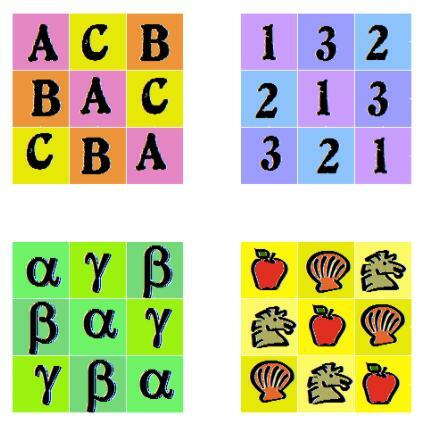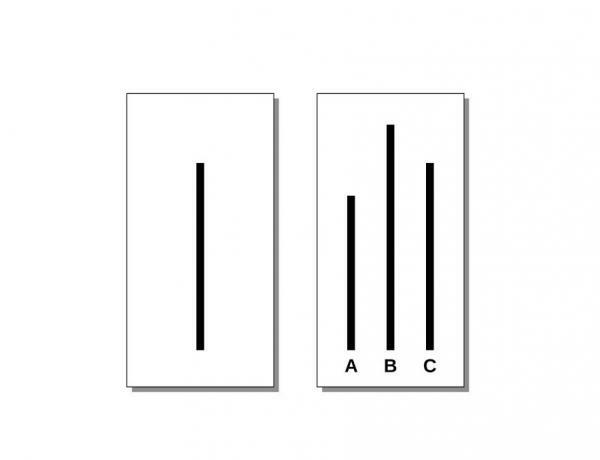
In the design of latin square more than one extraneous variable closely related to the dependent variable is blocked. These blocking variables can be subject or environmental, and one of them can even be the dependent variable itself. In contrast, a 2x2 factorial design means that it has two independent variables with two levels each and the number of treatments is 4.
The symbolic name of these designs is the same as those of the factorial designs that we will see in a later topic, but with different meaning: a 2x2 Latin square layout means it has two blocking variables with two values each and the number of conditions experimental is 2.
Latin square designs can be unifactorial Y factorials and in both cases the following conditions must be met: Lock variables they have to be closely related to the dependent variable and cannot interact with each other, or with the independent variable. The number of blocks of each blocking variable and of treatments has to be the same. The locked variables are arranged within a matrix, the lock matrix, with as many rows and columns as the block has been formed in the lock variables. One of the variables is situated in the direction of the rows and the other in the direction of the columns.
The number of cells has to be equal to the product of the number of values or blocks of each lock variable. Thus, for example, in the case of a 2x2 layout, the number of cells is four. Treatments are usually represented within each cell with different letters of the Latin alphabet. The Latin square arrangement can also be used in within-subject designs to control the effect of order or in the application of incomplete factorial designs. The number of subjects must be equal to or a multiple of the number of cells, since each cell must have the same number of subjects. The number of subjects in each cell must be the same, so that the effect of the blocking variables remains constant in each experimental treatment.
To each cell is applied randomly one treatmentTaking into account that each experimental condition must appear only once in each row and in each column, each row and each column being a complete replica of the experiment. The process we have to follow to apply this design is as follows: Determine which ones will be the blocking variables and measure them in all the subjects of the sample before the formation of the groups. Depending on the number of treatments we decide how many blocks we are going to form.
We build the data matrix, placing the blocks of each one blocking variable in the signatures and those of the other blocking variable in the columns. We randomly assign the treatments to the cells, taking into account that each treatment must appear only once in each row and in each column and each row and each column has to be a replica of the experiment. In each row and each column there must be all the experimental conditions. If the blocking variables are not subject, we randomly assign the subjects to the cells.
We apply the experimental treatments to all subjects and measure the dependent variable, analyze the data with an analysis of variance, We interpret the results, draw conclusions and generalize to the population from which we have extracted the sample. Finally we write the investigation report. Next we have the symbolic representation of the 2x2 Latin square design.
This design, by blocking two variables, has greater internal validity than previous designs, but the external validity is very small due to the elimination of subjects and the sensitization of the subjects to the measures of the variables of blocking.
The Greco-Roman square design It is characterized by using two block variables if it has two independent variables (factorial design) and three blocking variables if it only has one independent variable (univariate design) since it is essential in this design that the total number of variables between independent and blocked variables be 4.
This article is merely informative, in Psychology-Online we do not have the power to make a diagnosis or recommend a treatment. We invite you to go to a psychologist to treat your particular case.


